In the late 13th century, the Mongol’s first invasion of Japan was critical in medieval Japanese history. Initiated by Kublai Khan’s expansive Mongol Empire, the invasion represented a clash of mighty forces and contrasting cultures. The battles, characterized by intense combat and strategic prowess, unfolded primarily in Kyushu, testing the resilience of the Japanese samurai.
The aftermath of this conflict left a lasting impact on Japan, shaping its military strategies and cultural identity. It also set the stage for future encounters between these historical powers.
Key Takeaways
- Kublai Khan’s demand for Japanese submission led to the First Mongol Invasion of Japan in 1274, a pivotal event in medieval history.
- The Japanese samurai fiercely resisted the Mongol forces, showcasing their martial prowess despite facing advanced weaponry and tactics.
- A significant typhoon, viewed as a divine intervention (“kamikaze”), aided in thwarting the Mongol invasion.
- The invasion’s aftermath led to increased military vigilance in Japan and economic strain due to defense costs and lack of formal rewards for samurai.
- This conflict underscored the importance of maritime defense in Japan and influenced its future military strategies.
Prelude of the First Mongol Invasion
Mongols’ desire for expansion
The First Mongol Invasion of Japan, a pivotal event in medieval history, unfolded amidst growing Mongol power and ambition. Under the leadership of Kublai Khan, the Mongol Empire expanded rapidly across Asia.
By the mid-13th century, this expansion brought them to the shores of Japan. Having already subdued Goryeo (present-day Korea), the Mongol army turned their sights to Japan, driven by a desire for further conquest and control.
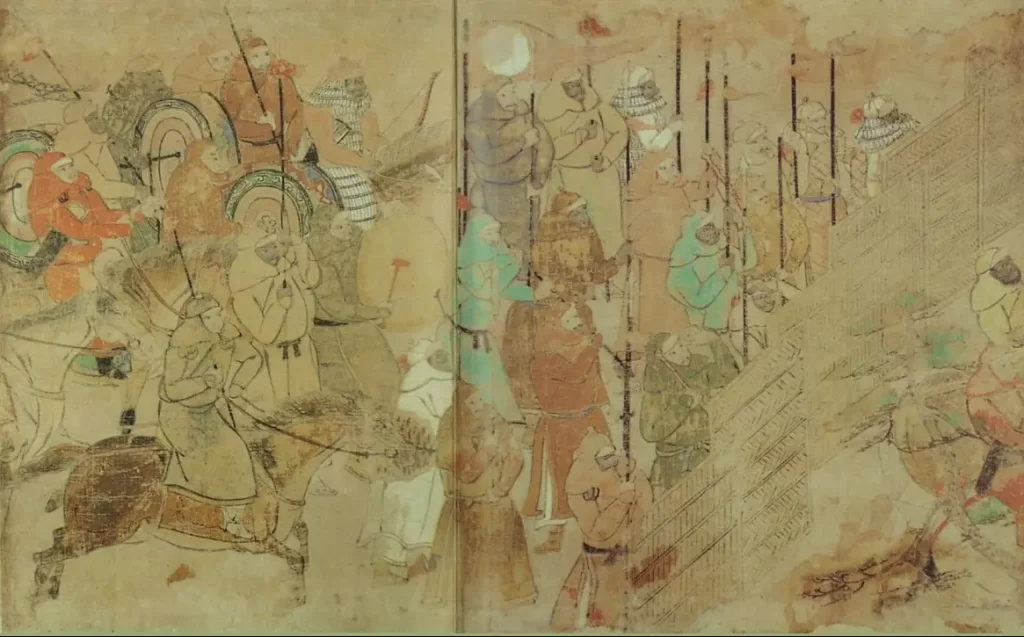
Japan Rejected Kublai Khan’s Demands for Submission
Kublai Khan, the grandson of Genghis Khan, initiated the campaign by sending envoys to Japan in 1266, demanding submission and tribute. The Japanese response was unequivocal: they beheaded the diplomatic envoys. This act of defiance set the stage for conflict.
Kublai Khan, undeterred, dispatched more envoys in 1268, 1269, and 1271, only to be met with similar resistance. The Japanese, under the rule of the Kamakura Shogunate, steadfastly refused to accede to Mongol demands.
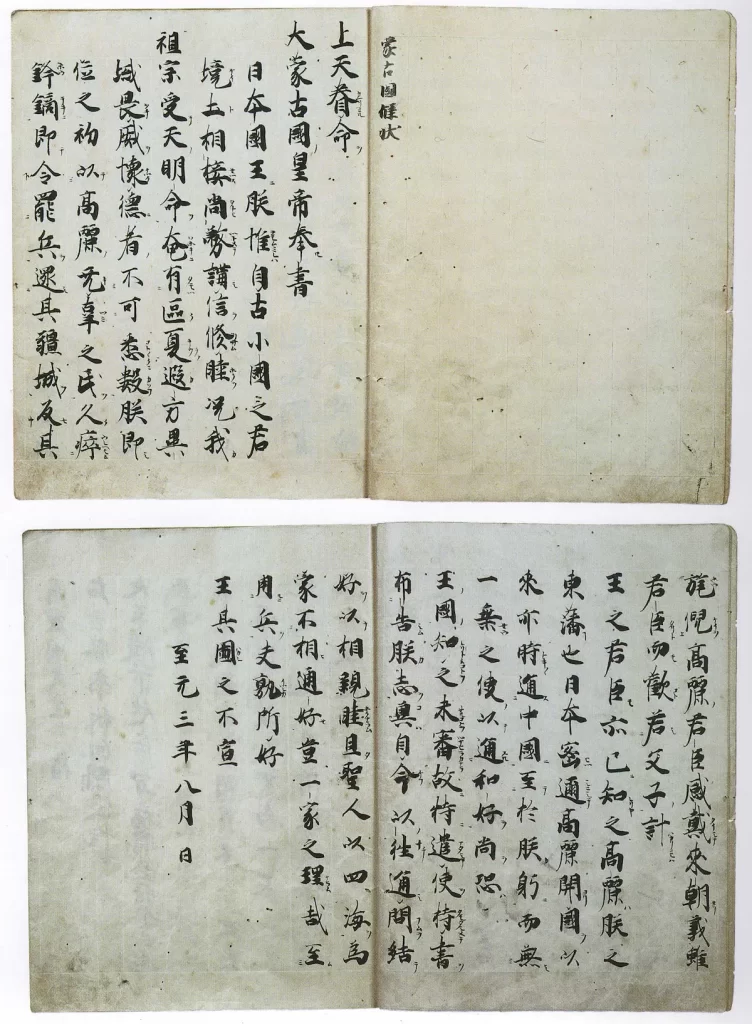
The Unavoidable Invasion
As tensions escalated, Japan began preparations for an inevitable invasion. They fortified their coastal defenses, particularly on Kyushu, the anticipated point of Mongol landfall.
The Japanese samurai, renowned for their martial prowess, readied themselves for battle, adhering to the code of Bushido that emphasized honor, bravery, and loyalty.
Meanwhile, the Mongols amassed a formidable invasion force comprising thousands of soldiers from their empire, including Chinese and Korean contingents. The stage was set for a monumental clash.
The Mongols, with their vast empire and seasoned army, were poised for invasion. The Japanese, fiercely independent and determined to defend their homeland, braced for the impending conflict.
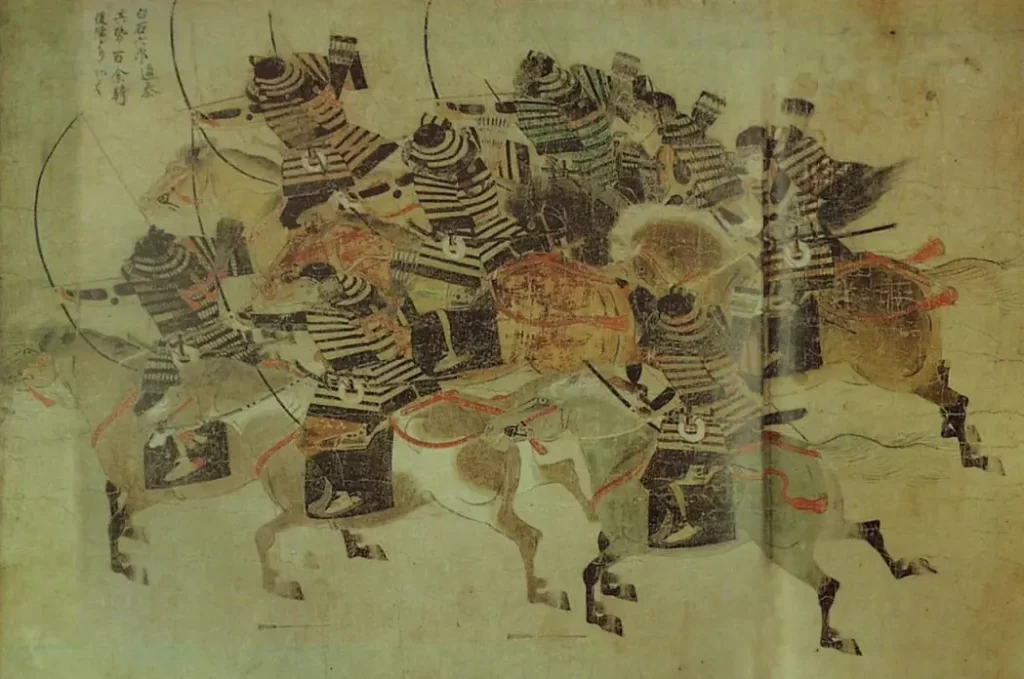
The Battles in the First Mongol Invasion
The Mongol invasion of Japan, known as the Battle of Bun’ei, commenced in 1274. Kublai Khan’s formidable force, comprising an estimated 15,000 Mongol, Chinese, and Korean soldiers, along with 900 ships, launched a two-pronged attack on Japan. Their primary target was the island of Kyushu, specifically Hakata Bay (near present-day Fukuoka).
Battle of Hakata Bay
The Japanese defenders, led by the samurai warriors, fiercely resisted the invasion. The Japanese had no naval tradition to counter the Mongol fleet, and despite heroic efforts, Tsushima and Iki Islands were overrun.
The later battles were marked by intense hand-to-hand combat, with the samurai utilizing their renowned swordsmanship and the Mongols employing a combination of cavalry charges and archery.
One notable aspect of the Mongol strategy was their use of explosive weapons, which were relatively new in warfare then. These explosives caused considerable confusion and damage among the Japanese forces. However, the samurai’s resilience and tactical acumen, honed through years of warfare and training, enabled them to hold their ground.

The Wind that Destroyed the Mongol Fleet
The turning point came when a massive storm, possibly a typhoon, hit the area. This natural disaster devastated the Mongol fleet as they were leaving the harbor due to manpower and logistics problems.
The Japanese viewed this storm as a divine wind, or “kamikaze,” which they believed was sent by the gods to protect Japan from invasion. The invaders suffered significant losses of over 13,000 men and were forced to retreat.
The battle, though brief, was intense and pivotal. It showcased the clash of two distinct military cultures and strategies. The Mongols’ reliance on large-scale coordinated attacks and technological advancements met the Japanese emphasis on individual martial skill and bravery.
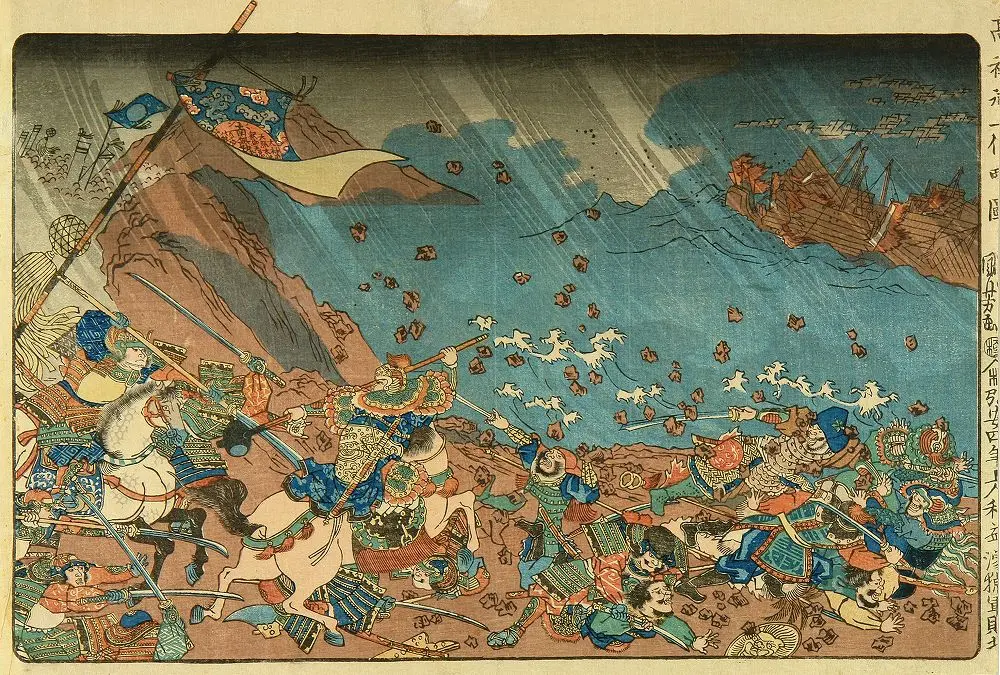
Aftermath of the First Mongol Invasion
Despite their retreat, the Mongols’ attempt to invade Japan was a testament to their far-reaching ambitions and military capabilities. This failed invasion was a rare setback for Kublai Khan’s otherwise successful expansionist campaigns.
A Boost to Samurai’s Standing
The successful defense against the Mongol invasion in Japan bolstered the samurai’s reputation and solidified their role in Japanese society and politics.
The victory was seen as a divine endorsement of the Japanese people and their way of life, reinforcing the belief in the protective power of the kamikaze. The divine winds were credited with saving Japan from foreign invasion.
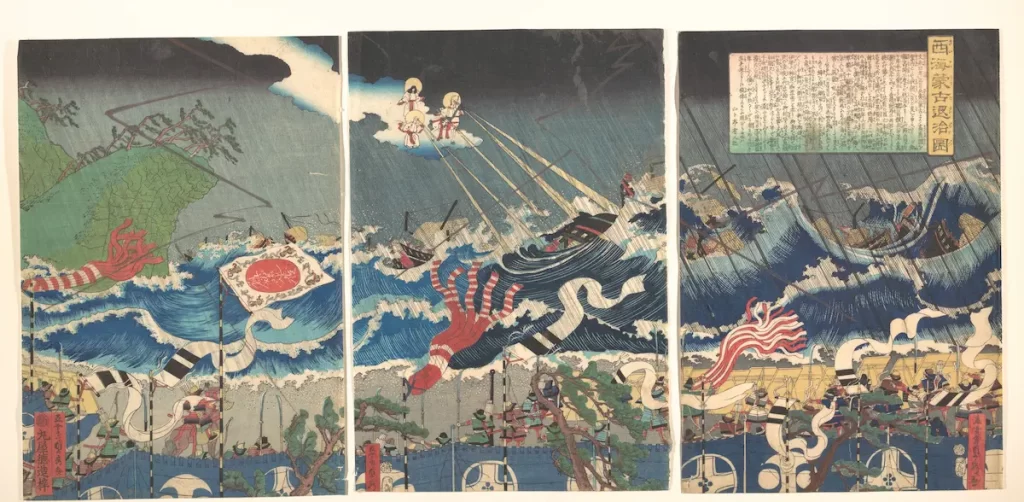
The financial and military strain of the invasion was considerable for Japan. The Kamakura Shogunate faced significant challenges in the aftermath, including dealing with the costs of the defense and the need to reward the samurai for their service.
This period marked a turning point in Japanese history, as the samurai class began to gain more influence and power, eventually leading to changes in Japan’s political structure.
Moreover, the invasion had a lasting impact on Japanese culture and national identity.
It fostered a sense of unity against a common foe and a deep-seated wariness of foreign invasion, which would influence Japan’s foreign relations for centuries.
The concept of the kamikaze would resonate through Japanese history, emerging again in World War II as a symbol of national defense and sacrifice.
Still, the Japanese victory at the Battle of Bun’ei did not lead to complacency. They continued to fortify their defenses and improve military tactics, ready for the Mongol’s second invasion that was to come in 1281.
Frequently Asked Questions
When did the first Mongol Invasion of Japan take place?
The first Mongol invasion of Japan occurred in November 1274, as indicated by the Mongol fleet setting sail for Tsushima Island.
Who were the main parties in the First Mongol Invasion of Japan?
The main parties in the First Mongol Invasion of Japan were the Mongol Empire, which included Mongol troops along with thousands of Koreans and Chinese, and the Japanese, particularly the samurai defending their homeland.
Why did the First Mongol invasion of Japan fail?
The first Mongol invasion of Japan failed primarily due to a significant typhoon that devastated the Mongol fleet, forcing their retreat. This natural disaster, combined with the fierce resistance of the Japanese samurai, thwarted the Mongol invasion.
Further Reading
- The Cambridge History of Japan: Volume 3 (Medieval Japan)
- The Samurai: A Military History by Stephen Turnbull
- Samurai Warfare by Stephen Turnbull


